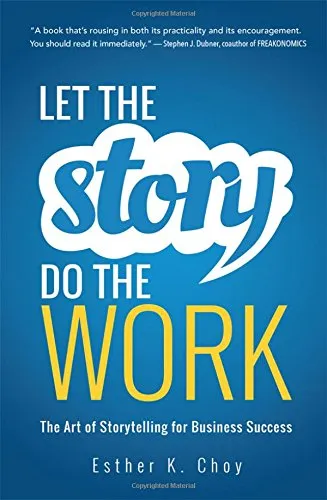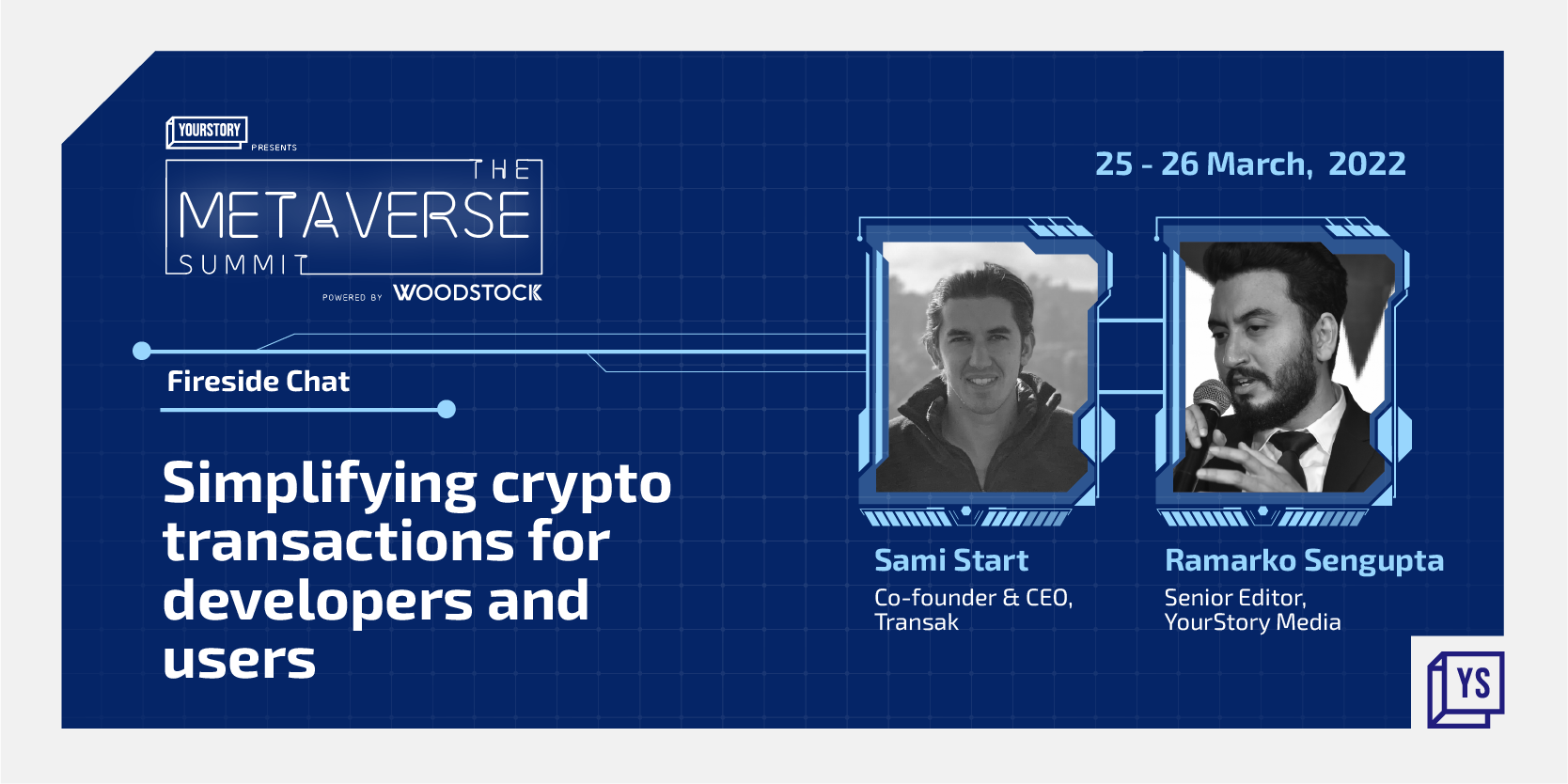The five types of business stories: how startups can refine their pitch with effective storytelling
How important is storytelling for an entrepreneur? What kinds of stories can be crafted, and how do you know your stories are on the right track? This new book on storytelling provides a wealth of tips and case studies for effective communication.

“At the heart of leadership lies persuasion. At the heart of persuasion lies storytelling,” begins Esther Choy in her book Let the Story Do the Work: The Art of Storytelling for Business Success.
Esther Choy is the founder of Leadership Story Lab. She has coached managers at companies such as AllState, BP, Brookfield Asset Management, the Chicago Mercantile Exchange Groups, and US Cellular. Esther has also worked with the board of directors of non-profits to enhance their fundraising capabilities.
“You don’t need to be a superhero to tell great stories,” says Esther. Storytelling is a craft and professional practice that can be sharpened with the right framework, tools, and case studies. Storytelling can be used effectively for startup pitches, fundraising, social causes, change management, interviews, data visualisation, defensive positioning, and persuasive communication.
The 11 chapters in the book span 230 pages, and the material is well-presented and useful. See my reviews of the related books The Storyteller’s Secret (Carmine Gallo), Whoever Tells the Best Story Wins (Annette Simmons), and First-Time Leader (George Bradt and Gillian Davis); also check out YourStory’s Changemaker Story Canvas, a free visualisation tool for startup founders and social entrepreneurs.
Facts and logic on their own may not stand out in a meaningful way. It’s not enough just to get the audience’s attention, but to inspire them to action. Stories during conferences and meetings also need to be tweaked in real time, and lengthened or shortened depending on sudden schedule changes. Storytelling can convert business communication from ‘auto-pilot exchanges’ to authentic, persuasive and action-oriented conversations.
Esther begins by clarifying that a story is not a monologue, anecdote, pitch, presentation, product, or thesis. A story has a structure (a beginning, a middle, and an end), story elements, authenticity and strategy. Effective storytelling requires mastery of the elements, plots and tactics of narrative. I have summarised these key themes of storytelling in Table 1.
Table 1: The Craft of Storytelling

Story elements and plots
Stories should blend logic with emotion. Internal impacts of a story include knowledge imparted and emotions felt; the way audiences feel will reflect on how well they remember your story, and for how long. External factors to monitor are what questions the audience asks (what kind of dialogue ensues), and how they act upon your message.
Leaving stories open-ended, invites audiences to share their own stories. This is particularly effective for networking events, and helps you collect audience stories. Good storytellers know when to ‘dump data’ or just intrigue the audience, when to prove a fact, and when to go beyond to persuasion. Storytellers should also track the news for business and tech trends, and use their stories to fill the vacuum, eg provide missing explanations.
Esther provides a range of outlines and examples to support the five basic plots of business stories: origin (Indra Nooyi: first non-US born CEO of a major US company, first female CEO of PepsiCo), rags to riches (‘underdog’ or David-and-Goliath, eg Oprah Winfrey, John Paul DeJoria), rebirth (redemption eg Richard Teerlink of Harley Davidson), overcoming the monster (Luke Skywalker in Star Wars; climate change), and the quest (Indiana Jones; James Dyson and the bag-less vacuum cleaner).
Storytelling tactics
For business impact, the real objective of storytelling is to get the audience to do something about their needs and aspirations, and not just understand you better. “Understand that the story of you isn’t about you,” Esther advises. In fact, the story should guide users towards products and services, and not remain stuck at the narrator level. “Your story has to answer your audience’s questions – and if it doesn’t, you will lose that audience,” says Esther. Your story should be client-focused and not me-focused.
The acknowledge-inspire-aspire model begins by acknowledging the audience (to gain trust and attention), inspiring them to a different and better vision, and getting them to aspire to a better state (with details provided). Venn diagrams can help map out multiple stakeholders in the audience (eg in B2B2C settings), their knowledge gaps, desired states, and fears. This can be used to craft a story for an advertising campaign or employee-customer interactions.
In today’s data abundant world, audiences want to know what the data means, why they should care, and what they need to do about your offerings. “The best leadership stories facilitate, guide and prompt actions,” Esther explains. Effective data storytelling helps here, by providing insights and visualisation.
Good storytelling involves a mix of clarity and curiosity – it can help to tell a story first, and then back it up with numbers and data, eg warning a company about customer churn. Good data stories drive discussion about other possible scenarios, and responsive actions. Conflict, emotion, and resolution are important story components here.
Using analogies or metaphors and reducing large concepts into smaller chunks helps audiences understand your message easier. Simplify without dumbing down, Esther advises. Other effective methods are provoking audience imagination. “Imagination is an underutilised muscle for many professionals today, but one with high impact,” she laments.

Visual aids to stories include Venn diagrams, flow cycles, graphs, pie charts, formulas, and freestyle illustrations. They can drive home the relationships in your story, patterns, ratios, processes, and governing principles. Getting feedback and refining these elements will improve your ‘storypicture’ (Flipcharts, post-its, table-top sheets, and even napkins or smartphones help in capturing audience inputs). Storytelling and ‘storydrawing’ are a good combination.
Storytellers should also collect stories from around the world to augment their own personal stories. “Collecting stories becomes an ongoing task for any storyteller serious about mastering their craft,” Esther advises, just as reading a lot helps to become a good writer. The same story can also be spun differently depending on whose point of view is at centre stage.
Storytellers should also “listen aggressively” and get audience feedback in terms of likes, pain-points, contributions, surprises, highlights, differences, and takeaways.
Stories in action
The book describes a number of stories in action, along with the author’s own critique of each story and how it could have been made better, eg a more interesting start, a compelling hook at the beginning, more personal insights, glimpses of the future, a clear call to action. Stories should have a sense of momentum and change, otherwise they will come across as lifeless or aimless.
During networking events, it helps to describe yourself in terms beyond your job title, and in intriguing ways, eg habit destroyer (leadership coach), idea architect (social innovator), digital revenue generator (website designer), guardian against boredom (speechwriter), human mirror (fashion model), invisible man everyone needs (IT engineer). You can describe yourself creatively in terms of the benefits you deliver, or how cool your new work is.
For social entrepreneurs, it is important to focus on the audience’s point of view and guide them towards the impact they can have on the beneficiaries. A mix of factsheets and individual stories help, for causes ranging from environmental preservation to child welfare.
One of the best indicators that your story is effective is when it inspires others to share their own stories. “The best stories resonate and lead to more stories, allowing us to connect deeply with others through this vital form of communication,” explains Esther.
In sum, storytelling is a well-researched business discipline and professionals can apply many of the principles to their own experiences and interactions. “Crafting your story is a process, not a destination,” signs off Esther.












